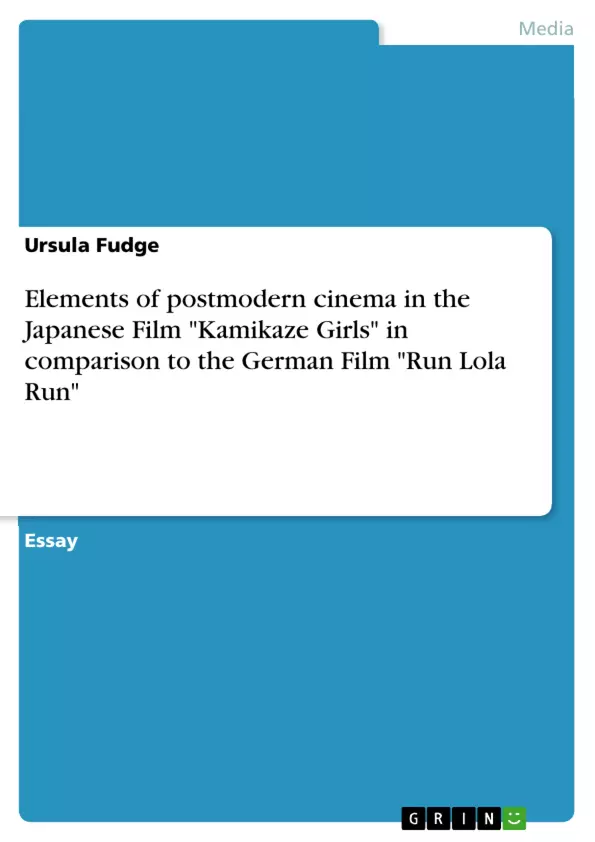Postmodernity, despite its connotations with mostly art and architecture is also present within cinematography, revolving and changing the forms of narrative by rebuilding and restructuring onto a new form of expression. With the connotations from the past and signifiers of the future, postmodern cinematography creates a separate niche for films where pastiche and spectacle is often prioritized over the narrative.
Table of Contents
- The elements of postmodern cinema in a Japanese Film "Kamikaze Girls"
- Postmodern Cinema and Its Defining Characteristics
- Spectacle and Pastiche in Postmodern Cinema
- The Fragmentation of Narrative Structure
- Postmodernism in Japanese Cinema
- "Kamikaze Girls": A Case Study in Postmodern Japanese Cinema
Objectives and Key Themes
This work examines the elements of postmodern cinema as they are present in the Japanese film "Kamikaze Girls". The primary objective is to demonstrate how spectacle, pastiche, and fragmented narrative structure are employed in this film to create a unique cinematic experience. The work also explores the role of postmodernism in Japanese cinema, highlighting its connections to globalization, consumerism, and cultural shifts.- Postmodern Cinema
- Spectacle and Pastiche
- Fragmentation of Narrative Structure
- Postmodernism in Japan
- "Kamikaze Girls" as a Postmodern Film
Chapter Summaries
- The first chapter defines postmodern cinema, highlighting its key characteristics, including a focus on spectacle and pastiche over narrative, and the rejection of traditional narrative structures. It examines how postmodern cinema often reflects contemporary societal issues and cultural shifts.
- The second chapter explores the role of spectacle and pastiche in postmodern cinema. It discusses how these elements can create a visually striking and unique cinematic experience, often blending genres and styles from different eras and cultures.
- The third chapter analyzes the fragmentation of narrative structure in postmodern cinema. It examines how this technique can create a sense of disorientation and ambiguity, challenging the viewer's expectations of traditional narrative progression.
- The fourth chapter examines the influence of postmodernism on Japanese cinema. It explores how Japanese filmmakers have embraced postmodern elements, such as spectacle and pastiche, while also incorporating traditional Japanese cultural values.
- The fifth chapter analyzes "Kamikaze Girls" as a case study of postmodern Japanese cinema. It examines how the film utilizes spectacle, pastiche, and fragmented narrative structure to create a distinctive cinematic experience that reflects contemporary Japanese society and its cultural complexities.
Keywords
This work centers around the themes of postmodern cinema, spectacle, pastiche, fragmented narrative structure, Japanese cinema, "Kamikaze Girls", globalization, consumerism, cultural shifts, and societal reflections. The text explores the use of these elements in film and the cultural implications of their presence.
Fin de l'extrait de 15 pages
- haut de page
- Citation du texte
- Ursula Fudge (Auteur), 2013, Elements of postmodern cinema in the Japanese Film "Kamikaze Girls" in comparison to the German Film "Run Lola Run", Munich, GRIN Verlag, https://www.grin.com/document/283712
Lire l'ebook



